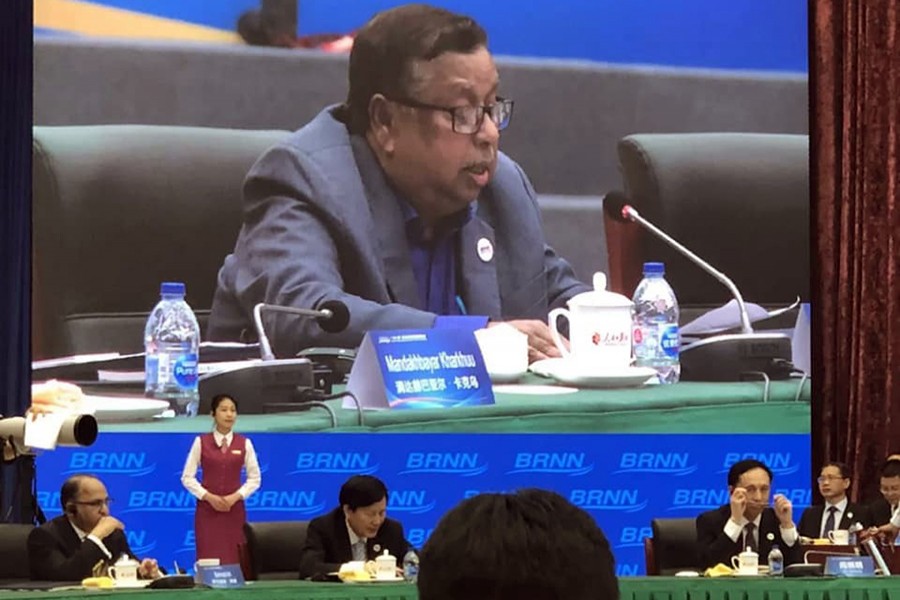Since initiating market reforms in 1978, China had shifted from a centrally-planned economy to a more market-based one and subsequently experienced rapid economic and social development.
The country's gross domestic product (GDP) growth, according to a report, averaged nearly 10 per cent a year-the fastest sustained expansion by a major economy in history-and more than 850 million people got out of the poverty cycle.
China attained all the Millennium Development Goals (MDGs) by 2015 and made a major contribution to achievement of the MDGs globally. China's GDP is now heading for a more balanced and sustainable growth.
With a population of 1.3 billion, China is the world's second largest economy. It is still the largest if measured in terms of the purchasing price parity. China has been the single largest contributor to the world growth since the global financial crisis in 2008.
The country is on track to eliminate absolute poverty by 2020, according to its poverty standard. Its per capita rural net income is RMB 2,300 per year, as measured on the 2010 constant prices. However, there are still an estimated 373.1 million people below the "upper middle income" international poverty line of $5.50 a day.
Rapid economic ascendance has brought on many challenges as well, including high inequality, risks to environmental sustainability, and external imbalances. China also faces demographic pressure related to an aging population and the internal labour migration.
China's rapid economic growth exceeded the pace of institutional development and there are important institutional and reform gaps that it needs to address to ensure a sustainable growth path. Analysts say significant policy adjustments are required for China's growth to be sustainable.
China's 13th Five-Year Plan (2016-2020) highlights the development of services and measures to address environmental and social imbalances, setting targets to reduce pollution, increase energy efficiency, improve access to education and healthcare, and expand social protection.
The fact that the world reached its UN millennium development goal of halving extreme poverty was largely driven by China, which accounted for more than three quarters of global poverty reduction between 1990 and 2005. Similarly, such development fuelled the ballooning of the Asian middle class that underpinned global economic convergence and a reduction of inequality between countries.
China became the world's manufacturing hub, specialising in the labour-intensive, export-led production of cheap goods that enabled a gradual increase in product complexity. In a nutshell, its growth strategy was to assemble and sell cheap goods to the world.
This impact of China's economic progress on global poverty statistics is not surprising considering that it accounts for about 18 per cent of the world's population.
Between 2010 and 2016, private sector firms produced between two-thirds and three-quarters of China's GDP; which accounts for 90 per cent of the country's exports. This is quite a recent development and part of the frequently discussed economic rebalancing that China is undertaking.
Services are also the most important driver of job creation. An increase of 1.0 per cent in services output generates one million jobs, compared to only half a million jobs created by a 1.0 per cent rise in industrial output. Wages outside the agriculture sector are typically three times higher than wages in agriculture. Such growth in services reflects the upswing in wealth and disposable household income. Chinese consumers are spending more on lifestyle services and experiences while also moving from mass to premium segments.
Among the fastest growing sectors of the economy are healthcare, technology, education and entertainment - which are gaining in importance in the light of China's economic rebalancing. Since the 1990s, state-owned enterprises (SOEs) have been revamped through closures and mergers.
China has a substantive bearing on global economic performance. Since 2010, it has been the world's largest exporter and second-largest importer of merchandise as well as the fifth largest exporter and third largest importer of commercial services.
China also has the world's largest foreign exchange reserves of $3.21 trillion. Furthermore, between 2005 and 2016 China's total global investment and construction activities amounted to a value of about $1.2 trillion. A big part of this investment comes in the form of development finance.
Also, the country has doubled the available financial capital for development finance globally over the past decade and accounts for more such loans than the world's six major multilateral institutions combined.
China is expected to be the world's largest economy by 2030. As an overview shows, the country is on its way to claim its position as the world's largest economy amid a flurry of revolutionary activities in the industrial sector.
Also read:
https://thefinancialexpress.com.bd/trade/strategic-plans-to-help-implement-bri-1556682954
http://thefinancialexpress.com.bd/world/asia/xi-pledges-zero-tolerance-for-graft-1556596115


